Tawaraya: Sleep like a shōgun-era samurai at Kyoto's finest ryokan
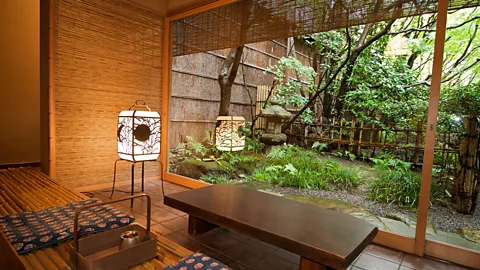 Alamy
AlamyRun by the same family for the past 12 generations, this more-than-300-year-old inn is considered one of the finest in all of Japan.
Every Monday night for the past 10 weeks, I have been glued to my couch, drinking in every moment of the critically acclaimed samurai series Shōgun.
The show, based on James Clavell's 1975 bestselling novel about Japan's violent feudal past, details the tug-of-war between rival lords vying to be the shōgun, (supreme military ruler) of Japan in the years just before the Tokugawa shogunate (1603-1868). The limited series drew more than nine million viewers across its various streaming platforms in its first few weeks, making it one of the most-watched show of 2024 so far.
As I watched scenes of the translator Toda Mariko and English sailor John Blackthorne seated on tatami mats framed by shoji screens, peering out of their wood-panelled rooms towards a private garden, I was transported to my own travels in Japan – particularly my experience staying at Tawaraya. Considered the finest ryokan (traditional Japanese inn) in Kyoto – and one of the finest in Japan – Tawaraya opened in 1709 during the heart of the Tokugawa shogunate and once hosted the types of people the show depicts: samurai, daimyō feudal lords and members of the Tokugawa clan itself. Today, the inn has been operated by the same family for 12 generations spanning more than 300 years.
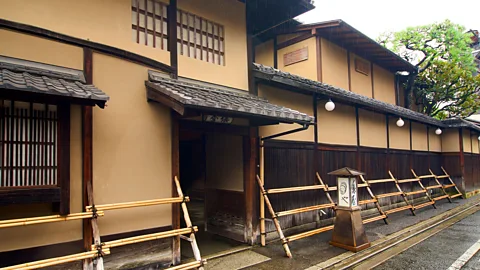 Alamy
AlamyBy the time Tawaraya was built, the shogun government established by Ieyasu Tokugawa – the real-life lord who unified Japan and inspired one of Shōgun's main characters, Lord Yoshii Toranaga – had ushered in a period of stability from his seat of power in Edo (modern-day Tokyo). Kyoto was still the capital, and feudal lords visiting the capital Kyoto on matters of state would lodge their samurai at Tawaraya. Towards the tumultuous end of the Edo period when imperial rule was restored, the inn was even run by a former samurai who was adopted into the family.
In the following decades, members of aristocratic and former daimyō families – including branches of the Tokugawa clan – began staying at Tawaraya due to its reputation for impeccable service. By the 20th Century, signatures from filmmakers Alfred Hitchcock and Steven Spielberg, Swedish King Carl XVI Gustafand Robert Oppenheimer began to appear in the guestbook. Tom Hanks, Tom Cruise, Harrison Ford and Jodie Foster have all spent the night here, and business magnate and hotel heir Barron Hilton once called Tawaraya "a lesson to hotelmen on what service is all about".
"Tawaraya is a place where almost all the traditional arts and crafts of Japan meet: textile art, architecture, cuisine, tea, lacquer, ceramics, gardening and the impossibly complex and elegant manners that find their expression in the polite language and gestures of the maid who attends to you during your stay, known as omotenashi," explained Chris Rowthorn, a tour operator and guidebook author who lived in Kyoto for 20 years.
Alongside its impeccable hospitality, tranquility is part of Tawaraya's appeal. The inn's timber-framed facade is only a block from Kyoto's busy Shiyakusho-mae subway station, but during my stay, I hardly heard a single footstep or voice that wasn't mine.
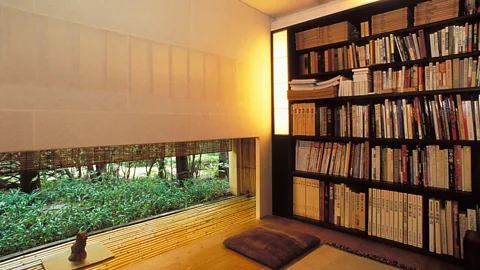 Alamy
AlamyCrossing the threshold onto the inn's cool, freshly washed stone floors felt like stepping through a portal to another place and time. When I arrived, there was no check-in to speak of. My shoes, umbrella and bags were whisked away before I had time to blink. A little bemused, I slid my feet into the house slippers that appeared at my feet before following one of the smiling attendants along dimly lit corridors. We passed private gardens and antique folding screens showing scenes of the city.
Staying at Tawaraya
Booking a room at Tawaraya is notoriously difficult because the inn has no website or dedicated booking platform. You can check availability at third-party sites like JAPANiCAN or TripAdvisor, but booking can only be done in Japanese by phone (+81 75-211-5566) or fax (+81 75-211-2204). Rooms are priced according to size and occupancy and range from $350 (£279) to $600 (£479) a night, per person, including dinner and breakfast. You might also consider visiting the family's Michelin-star tempura restaurant Ten You, located a block away (reservations must be made by your hotel or host).
"Tawaraya embodies the quintessence of Kyoto, seamlessly blending serene beauty with the art of hospitality; luxury whispers rather than shouts," said Sara Aiko Coe, founder and director of the company Curated Kyoto. "The moment you set foot inside, you're immersed in their world, a world where tradition infuses every corner of its design and hospitality."
After the traffic and noise of Kyoto, the abrupt peace and quiet was almost shocking. At Tawaraya, absence is by design: there's no lobby, no gym, no pool and no dining room. In my room, green and beige tatami mats lined the floors and translucent paper shoji doors slid noiselessly apart to reveal a walled private reflection garden filled with slender bamboo, leafy greenery and moss-covered stones.
Watching the show, I imagined that many scenes could have been shot at Tawaraya. Like me, Mariko and Usami Fuji might have knelt in silent reverie, wisps of steam curling upwards from tea held in cupped hands as they contemplated the rain. Lady Ochiba may have put her final brush strokes to Mariko's reconciliatory poem about a leafless branch – a metaphor for supporting Lord Toranaga's cause – under Tawaraya's roof.
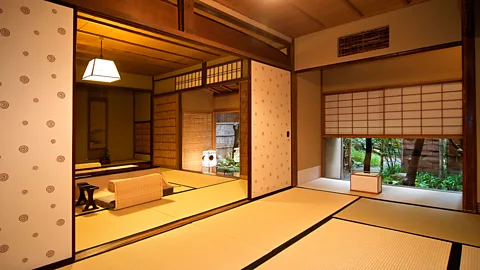 Alamy
AlamyIn Shōgun, when Blackthorne feels his first earthquake, Mariko explains that Japan's buildings are designed to be rebuilt as quickly as they are destroyed by landslides, tsunamis and fires. In 1864, Tawaraya burned to the ground when fire engulfed the district during a battle, but a year later, Tawaraya had been rebuilt and was back in business, and its current configuration of 18 rooms was reached after several more renovations and additions.
As in Shōgun, there are no permanent beds at Tawaraya; instead, rooms are adapted over the course of the day in anticipation of guests' needs. When I first arrived, the main space was furnished with cushions and a low table for taking tea. Later, when I returned from an afternoon exploring the boutiques, eateries and art shops on Tawaraya's neighbouring streets, things looked a little different.
A custom-made futon crafted from natural silk had been placed on floor, draped with plush, smooth cotton comforters. The mattress was developed by Tawaraya's 11th-generation proprietor, Satow Toshi, for breathability and – for want of a better word – poofiness; house rules require that attendants focus their every thought on the guest enjoying a good night's sleep as they lay them out.
Like most ryokan, a key aspect of Tawaraya's experience is a kaiseki dinner – a multicourse meal whose dishes feature ingredients selected at their peak ripeness and are carefully balanced in colour, texture and flavour. My sitting area had been readied for dinner with a low table set over a floor recess for my feet. (Only a handful of accommodations at Tawaraya offer this concession so that Western guests can sit more comfortably while enjoying a meal.) I swathed myself in the luxurious, cherry blossom-print cotton yukata, a variation of the unlined summer kimono, and waited with anticipation.
 Gemma Zoë Price
Gemma Zoë PriceMy room attendant brought in the first course and knelt behind a screen to arrange each tray out of sight before placing them on the table. She then explained each dish with polite formality in Japanese peppered with the names of key ingredients in English.
I dined on dishes of amago salmon and local riverfish, crab and raw squid, crunchy daikon and asparagus. Sadly, there was no nattō, the fermented soybean that Blackthorne compared to "a stinky cheese, yet rather enjoyable" and to which I'm partial.
More like this:
• The true story of Japan's samurai city that chose art over war
• The masters of a 5,000-year-old craft
• Why you should visit Japan's small but mighty 'little Kyoto'
Given a little forewarning, Tawaraya can arrange a geiko (the Kyoto word for geisha) to entertain you with conversation, songs, dances and drinking games in your room during dinner. Shōgun depicts skilled courtesans, like Lady Kiku, who create the "willow world", a place where men are entertained so they can forget their cares and live out their fantasies. Their successors, geisha, evolved later the during the Tokugawa shogunate, inheriting their role and status as entertainers – a tradition that endures today in a strictly cultural (and not sexual) way.
I instead opted for Tawaraya's other evening offering: an acupressure massage performed on my futon by a masked masseur enveloped in a crisp white uniform resembling a surgeon's scrubs. Once the service was complete, he quietly let himself out and I drifted off to sleep – another example of Tawaraya's perfectly executed style of hospitality.
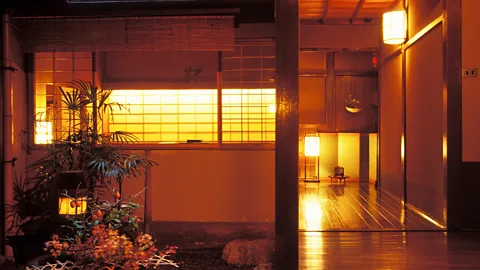 Alamy
AlamyScoring a room at Tawaraya is tricky, partly because inventory is low and in constant demand, and partly because the inn has no website or dedicated booking platform. But while we wait to hear if there will be a second season of the hit show, retreating into this sanctuary of a bygone era may be the closest you'll get to experiencing shogun-era Japan.
--
If you liked this story, sign up for The Essential List newsletter – a handpicked selection of features, videos and can't-miss news, delivered to your inbox twice a week.
